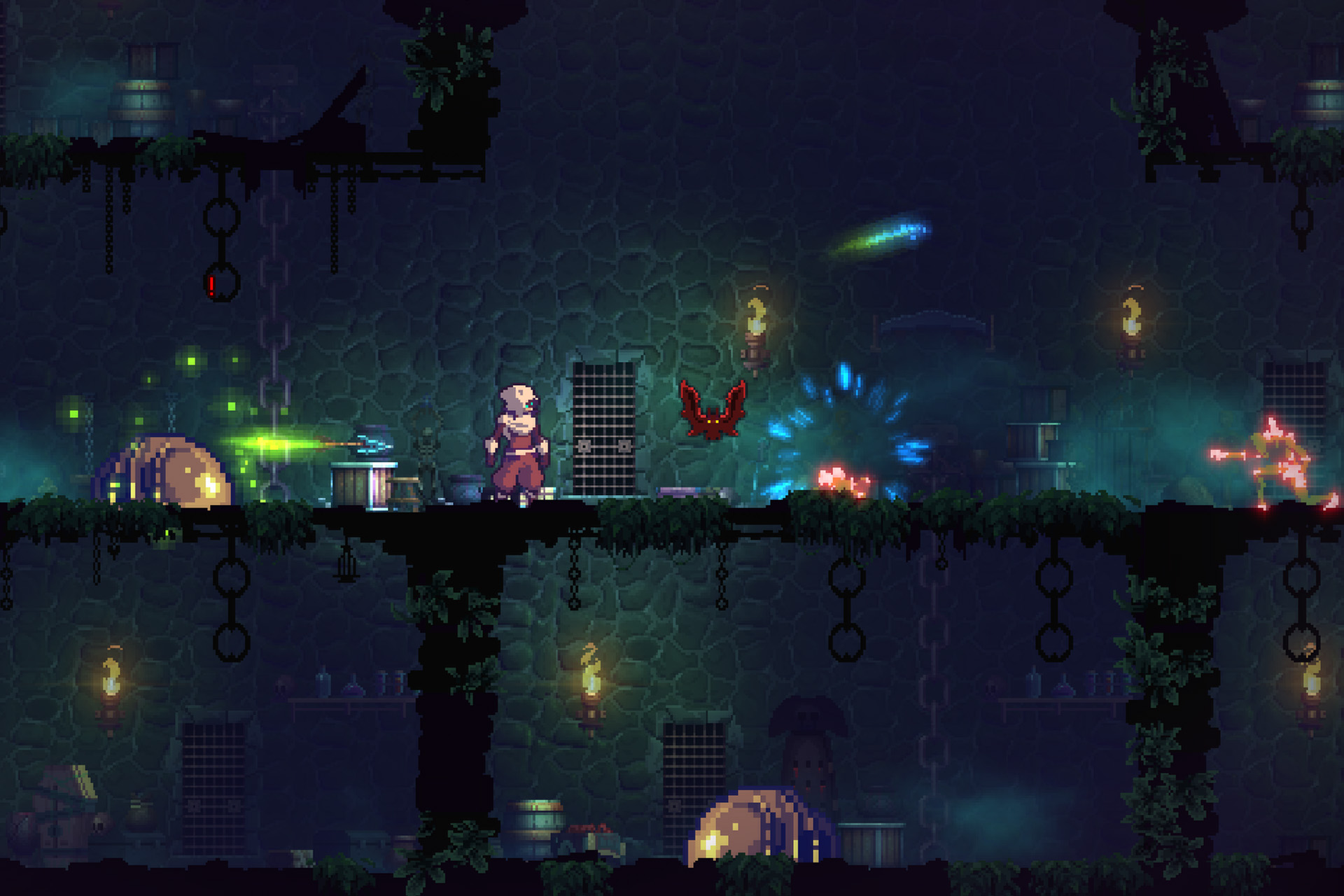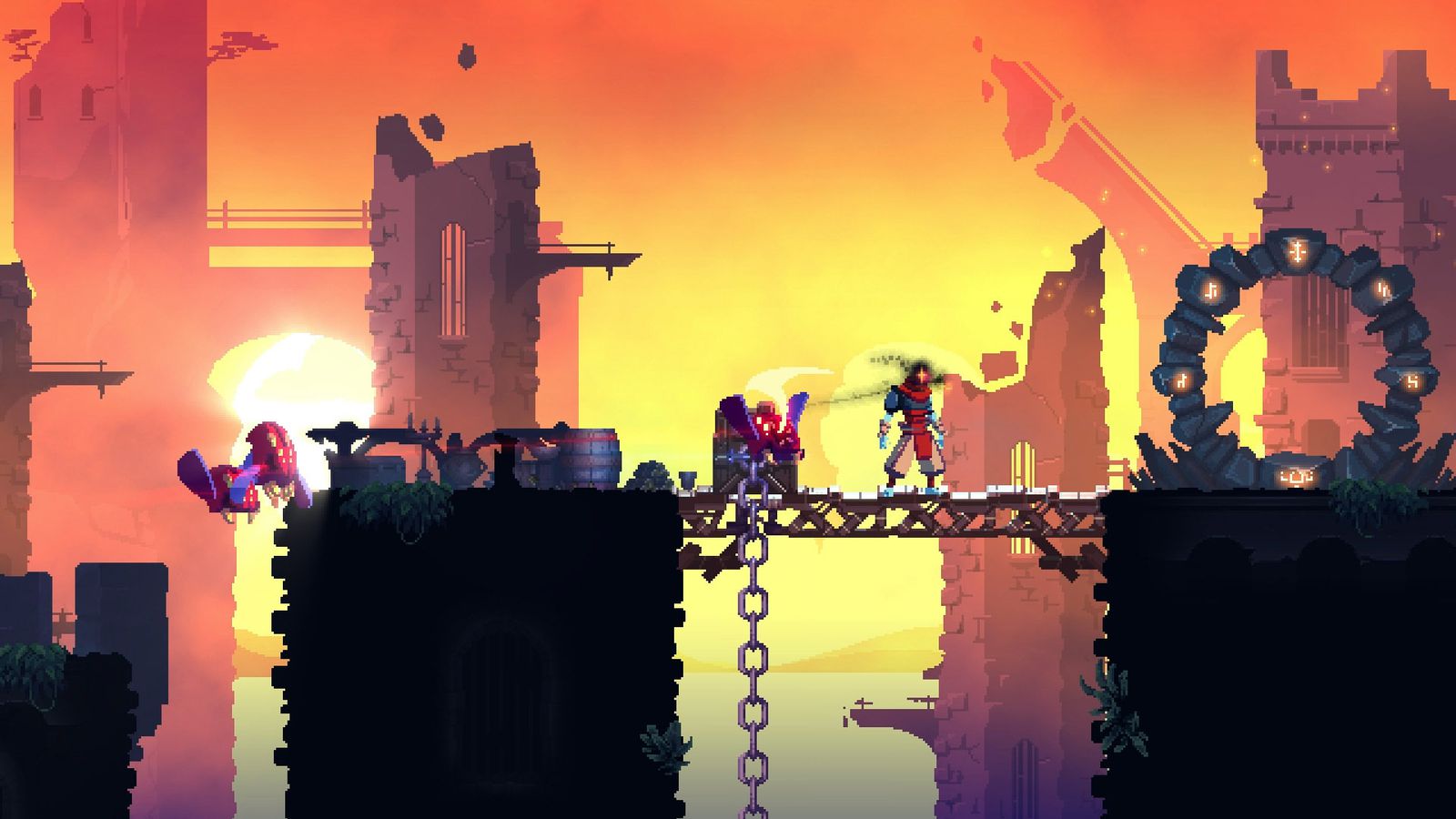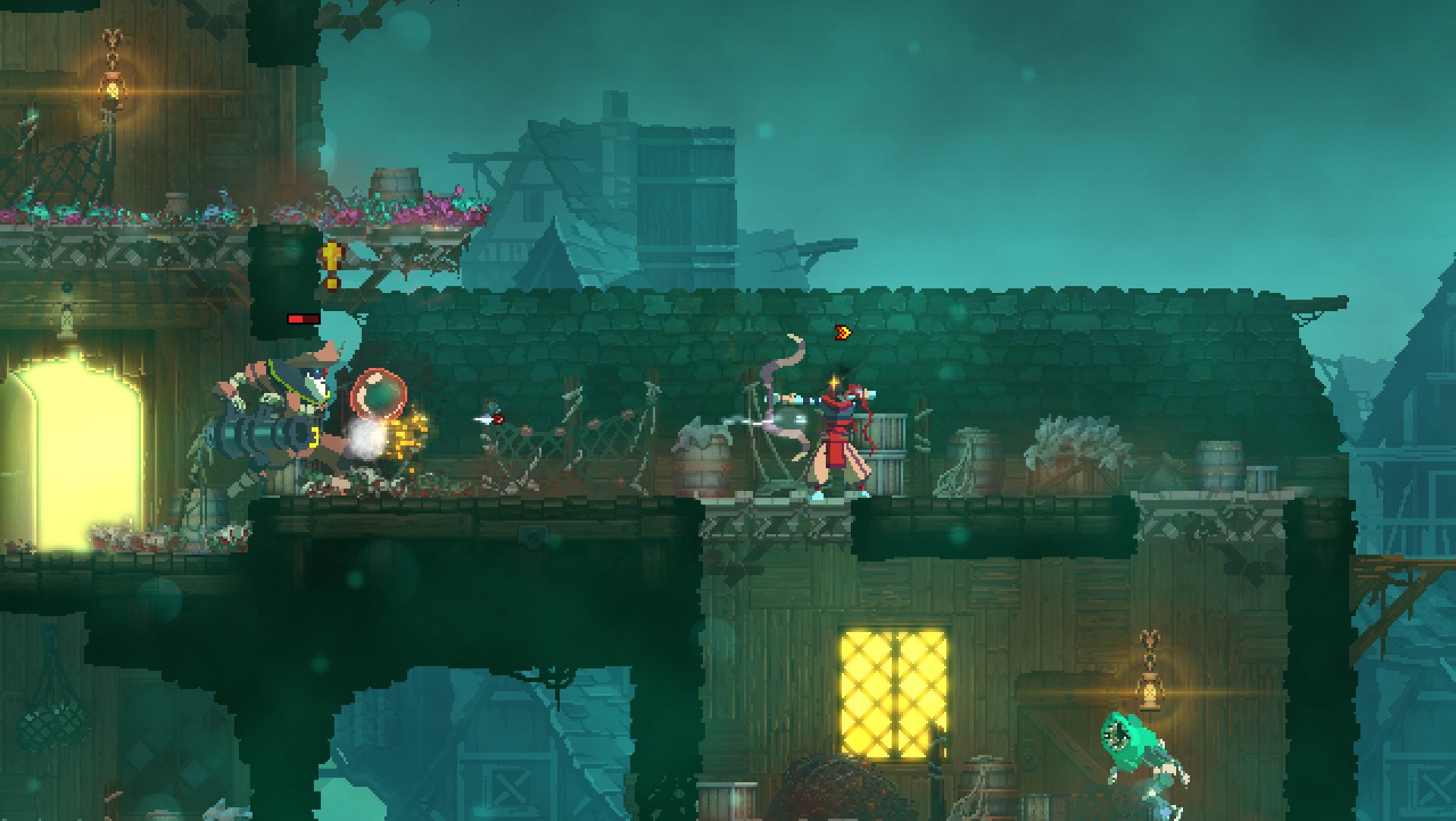
On my second run through Dead Cells I made it to the last level and was pretty sure I had it figured out. 63 runs later, when I finally took down the boss and stepped into my post-game replay, I’m one-hundred-percent sure I’m just now starting to understand the deep nuances of Motion Twin’s incredible action-platformer.
Also Read: WE HAPPY FEW Best PC Game REVIEW
Dead Cells is a triumph of shockingly good game design: the ever-changing guts of its beautifully illustrated levels, a staggering array of game-changing weapons and gadgets, and its breakneck motion fuse into an engrossing loop. It’s so engaging that even after dozens of hours clawing through its island fortress, I’m still discovering and devouring new morsels.

Choice and Consequence
The heart of Dead Cells is its layered commitment to risk and reward. At its surface you’re a decapitated prisoner reanimated for some unknown reason to run through a dozen levels that are gorgeously detailed — even though they’re procedurally generated — only to die and use what you’ve learned and collected to get a little farther the next time. This loop is at the core of what makes progressing through Dead Cells so special. Each new zone you reveal, each new artifact or weapon or skill you uncover, it all spurs that bittersweet, rewarding sense you’re slowly peeling away Dead Cells great mystery.

Each small bit of persistent power you pick up propels you forward like a bloody snowball careening down a mountain until you feel unstoppable.
The placement and order of its levels are Dead Cells’ skeletal frame, but the ever-changing layouts and enemy and item placements are the blood that pumps through its heart. It’s what makes every run different enough to be consistently tense and surprising and what challenges the notion you’ve seen it all when you’re dozens of runs through. You simply don’t know what you’re going to find, because it could be anything from a huge pool of equipment that’s delivered with perfect pacing. And just when I thought I’d dredged the best from that pool, in the very next run a shiny new toy would drop with glittering fanfare and I’d race to bank it with The Collector.

And though it may sting when you have to say goodbye to those perfect turrets that helped you progress further than ever before — the ones that set victims ablaze and do double damage to burning enemies in tandem — or the tens of thousands of gold you’ve collected on a particularly bountiful run, the actual progression comes from unlocking buffs, skills and weapons between each run that never go away — no matter how often you thrust your face into walls of spikes while trying to set a new land speed record in the Ancient Sewers.
But through that constant repetition, like being trapped in some kind of gothic-horror Groundhog’s Day, you’ll scrape together money, blueprints for new items, and Cells you can spend to unlock blueprints and buffs for future use. Each small bit of persistent power you pick up propels you forward like a bloody snowball careening down a mountain until you feel unstoppable.

Speed Demon
Momentum is where Dead Cells really shines. Its slick system of running, jumping, dodging, and pounding through these dungeons feels so good that the desire to move and attack quickly overrides a lot of the caution that comes with a game where death sends you back to the beginning.

If you're wily enough, move fast enough, or jump precisely enough, you're untouchable.
Motion Twin’s subtle design pushes you forward through ingenious touches. You’re rewarded for multi-kills with a burst of movement speed to keep propelling you forward. You don’t take damage from colliding with enemies, only their attacks inflict harm, and that grants a sense of safety even in the presence of the diverse and deadly foes. If you’re wily enough, move fast enough, or jump precisely enough, you’re untouchable. Though it should be noted that this kind of blazing speed is where I’ve seen occasional frame rate dips across every platform, frequently in the midst of a half-dozen enemies, and most frequently on the Nintendo Switch. But this is an issue that, while annoying, never made me feel like I was incapable of conquering the island.

Dead Cells’ movement and combat encourages you to put it all on the line to get a little farther. It’s meant to be replayed dozens of times, unlocking another small but significant fragment of the broad skillset with each new artifact you earn. Once you’ve unlocked all of the clever Metroid-style abilities you’re eventually able to move unrestricted through Dead Cells’ darkest recesses to uncover its skimpy, but fun, bits of story and cleverly-hidden game references in secret areas.

There’s a genuine sense that the secrets hiding near the end of Dead Cells’ journey are as potent as those you’re able to unlock near the start. Finding a rune in the acidic pits of the Toxic Sewers changed my first 15 minutes of every run thereafter. I now had access to hefty portion of new equipment, secret areas, and alternate routes that were once unreachable. There was almost a rush in dying because it meant I could dive back into the opening minutes to uncover something I previously couldn’t. That feeling carries over with each new artifact, and especially after discovering what’s on the other side of the final boss.
Improve, Improve
The real diversity in each run comes from an excellent set of choices in how you want the second-to-second gameplay to work. Perhaps you’ll blitzkrieg through with speed and fire and sword — you’ll be rewarded for your reckless pace with access to timed locking gates that only open if you reach them in their stingily allotted times. Or maybe you’ll go through Dead Cells methodically, using ranged weapons, traps, and turrets to safely pierce, poison, burn, or butcher enemies and thoroughly explore every inch of each level for treasure. You’ll be stronger for it.

I love that in Dead Cells you are free to experiment, but you don't quite know how it will all shake out. It keeps you improvising.
These playstyles are changeable on the fly, too, thanks to Dead Cells’ smart system for powering up throughout a run by collecting Scrolls of Power. In the beginning, you’re weak, and fragile, but as you collect these scrolls you’ll be able to choose a build based on your style and items. The catch is that building an aspect buffs its associated weapons and skills and it’s also how you increase your maximum health pool.
The more scrolls you dump into a specific aspect, the less overall health you get for each consecutive one, so if you want to play a headless beefcake capable of taking a blow, it’s wise to spread your points out. However, doing so means you’re not particularly powerful with any one set of items, so your damage likely won’t be enough to whittle down the ever-inflating enemies in the later levels. I love that in Dead Cells you are free to experiment, but you don’t quite know how it will all shake out. Your starting weapons, the items you pick up, and their modifiers are always different. It keeps you improvising.
.jpg)
After all of the experimenting, the one overarching strategy I discovered was that you can’t always go for the throat. My first 10 runs in Dead Cells were all aimed directly at the final boss, but I quickly realized spending over an hour to get there only to immediately die because I hadn’t properly prepared was a waste of effort. My revised strategy was to focus on extracting blueprints for new gear in some runs, and on harvesting Cells to unlock those items and buffs in others. And every once in a while I’d just run like a madman with a deathwish and explore as much as possible.
For a more dramatic change of pace, there’s a daily dungeon outside of your main campaign that tosses you into a random map with random pickups to see how fast you can kill the boss. And, like all things in Dead Cells, this mode also rewards permanent progression (in the form of blueprints) for consecutively clearing these challenges each day. It’s a fun distraction and gives you the chance to test out gear you’ve yet to find in your game.

Dead Cells is rewarding in its flexibility in a way few games are. Each easily digestible run through its beautifully detailed and shifting levels instills a feeling of discovery and familiarity. It goads you to push the limits of your ability, and mercilessly crushes you when you get too comfortable. There are layers of strategy and tactics buried not only in the immediate choices you make, but in the grander metagame each run builds toward. Dead Cells is a triumphant union of instinct, forethought, fun, and failure.

Post a Comment